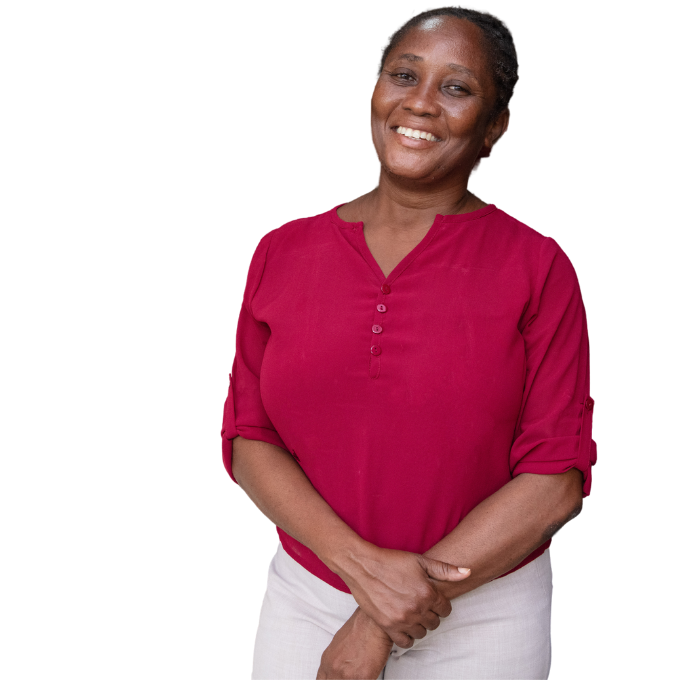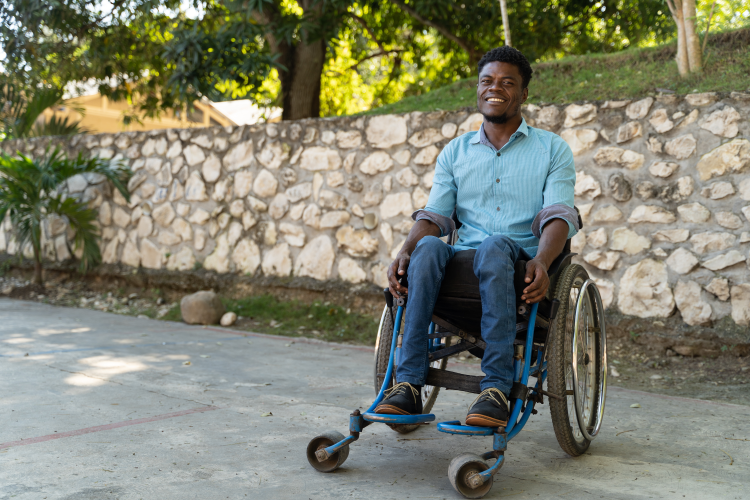“We never give up on our patients. We are proud of our mission, which is to serve the most vulnerable.”
Your donation can help Dr. Clermont and our entire staff care for more patients than ever before.


Maxsony is proud to be helping other spinal cord injury patients a decade after the 2010 earthquake changed his life.
Five years ago, Osney “Maxsony” Personna shared his with us his harrowing story of survival. He spent three days trapped under rubble: his school had collapsed around him. Shuffled from hospital to hospital for weeks on end, Maxsony was unable to find the care he needed until he came to SBH. But here, he found more than just treatment for his injuries. At the Spinal Cord Injury Center, he discovered his passion for advocacy.

After ten years, I live with the reminders of what happened. But overall, I feel good. Every day I come to work. Every day I move by myself. Every day, I work hard at the Spinal Cord Injury program to help people realize their autonomy—just like I have.
Maxsony, SCI peer Educatore
Ten years after Maxsony’s life changed forever, he believes things have changed in Haiti for people with disabilities. Although he thinks there is still an enormous amount of work to be done to reduce prejudice and increase accessibility, he is grateful for the progress he has seen in his community—progress he himself has led.
In his role as a peer educator, Maxsony visits other SCI patients in their homes and makes sure they are doing well. If they have a problem, whether it’s an issue with their assistive device or a developing wound, he is able to help them or get them the care they need at SBH. He listens to their problems and frustrations and tries to help them find solutions. Maxsony also visits local schools and community centers to raise awareness about people with disabilities. This is one of his favorite aspects of his job, helping to push back against the pervasive belief that people with handicaps can’t care for themselves or live independent lives.
Maxsony is living proof that people are far more than their disabilities, and that having an assistive device or a wheelchair does not erase your personhood. “After ten years, I live with the reminders of what happened,” he says. “But overall, I feel good. Every day I come to work. Every day I move by myself. Every day, I work hard at the Spinal Cord Injury program to help people realize their autonomy—just like I have.”
Your donation can help Dr. Clermont and our entire staff care for more patients than ever before.
